At 3pm on 19 May, all the public outrage that accompanied the delay to Wembley stadium will dissolve in the heat of an FA Cup final. But many of the firms that built it will find it harder to forget, particularly those in administration.
It is said that a year is a long time in football ŌĆō something for which Wembley contractor Multiplex should be immensely grateful. In two weeks, the stadium will host its first FA Cup final, and, although the venue was supposed to be ready for last yearŌĆÖs event, the public outrage at lengthening delays and spiralling costs has all but died away as thoughts turn towards the excitement of a classic final between the two teams that have dominated the league: Manchester United and Chelsea.
In the industry, too, Multiplex is in a far better position than looked possible last March. An out-of-court settlement with the Football Association, in which Multiplex handed over about ┬Ż36m, ended the grumbling between the two and cut MultiplexŌĆÖs losses on the scheme. Its latest set of results shows that it made ┬Ż120m on a turnover of ┬Ż912m for the first half of the financial year to 31 December 2006; its construction arm posted a pre-tax profit of ┬Ż17m. This suggests that the companyŌĆÖs image among clients has not been seriously damaged.
Although Multiplex is emerging from the shadow of the stadium, other firms have not been so fortunate. The best known is Cleveland Bridge, a large steelwork contractor that came off second best in a court battle with Multiplex. This week it lost its appeal against that judgment, and is liable for up to ┬Ż13m in damages and revaluation costs, as well as a hefty legal bill.
The fate of eight other subcontractors on the stadium has been less well publicised. All have suffered damage and some did not make it out alive. Five contractors ŌĆō Scanmoor, AR Security, SGD Engineering, Stadium Seating and Pel Stadium Stadium ŌĆō went into administration.
Of the firms that survived, many did so only by resorting to drastic measures. Here, we look at WembleyŌĆÖs casualties, the walking wounded and some of the survivors ...
AR Security
Installed security and smoke alarms
Fate Voluntary liquidation
- Before Wembley, AR Security had a pre-tax operating profit of ┬Ż120,000 on turnover of ┬Ż871,000 for the year to 31 March 2005. Its margins were a healthy 13.8%.
- It left the project in January 2006 after encountering payment problems at Wembley, despite being contracted until 31 March 2006, the original completion date.
- A source close to the company said at the time: ŌĆ£AR had no choice. It knew it would go bust if it didnŌĆÖt get a settlement on the money it was owed on the project.ŌĆØ
- The company went into voluntary liquidation in April 2006, appointing Deloitte as the administrator.
SGD Engineering
┬Ż4.5m deal to install toilet blocks
Fate Administration
- SGD Engineering went into administration at the end of November 2005, when 85% of its work on the stadium was complete. The company had 45 staff and 23 lost their jobs.
- The company, which is rumoured to have suffered cost overruns of 40%, claimed that Multiplex owed it ┬Ż2m at the time it went into administration. Multiplex denies that it owed the money.
- Les Ross, at administrator Grant Thornton, blamed the companyŌĆÖs demise on Wembley. He said: ŌĆ£SGDŌĆÖs administration was, ultimately, a result of issues it had with the Wembley contract.ŌĆØ
- Part of the business (a part that did not involve the Multiplex contract) was sold by administrators as a going concern in a confidential deal in December 2005.
Stadium Seating and Pel Stadium Seating
Contract to install 90,000 seats
Fate Administration
- Cheltenham-based Stadium Seating was a successful niche specialist that had worked on the City of Manchester stadium. It was employed as a sub-subcontractor to Pel Group.
- Stadium Seating went into administration in January 2006. Its administrators, Smith and Williamson, said the company claimed that it was owed about ┬Ż300,000 by its employer, Pel Stadium Seating. Pel allegedly terminated the contract in December 2005.
- Birmingham-based Pel Group took on the contract itself. It went into administration in July 2006, with 20,000 seats still to go.
- Most of the Pel Group companies ŌĆō Pel , Pel ║├╔½Ž╚╔·TV Services and Pel Investment ŌĆō were bought by Vinci subsidiary Norwest Holst, but the seating division remains in receivership.
Scanmoor
┬Ż9.9m contract for civils and structural work
Fate Administration
- Scanmoor blamed overtrading and problem contracts when it called in the administrator last month. Jason Baker, of administrator Vantis, said: ŌĆ£Wembley wasnŌĆÖt the main reason, but it was a factor.ŌĆØ The firm suffered cash flow problems on the contract, and its final account is unresolved.
- It worked on Wembley between 2004 and 2005. The 2005 accounts show a pre-tax profit of ┬Ż1.3m, compared with ┬Ż1.6m the previous year. Its margins were reduced to 1.8% from 4.3%.
- Three company directors have bought seven part-finished contracts from the administrator and have resumed trading as Scanmoor Contractors.
Phoenix Electrical
M&E
Fate Forced to sell business
- Multiplex gave Phoenix cost and time concessions to bail it out after rising costs jeopardised its position on the contract. Brian Ingram, then managing director, said at the time: ŌĆ£I wouldnŌĆÖt say they were propping us up, but they realised there were cost implications on the contract.ŌĆØ
- Phoenix was so beset by cash flow problems that it could not pay labour agency Beaver Management Systems, which culminated in 250 BMS electricians walking off the project in May 2006.
- Phoenix scaled back its contract in June 2006. Multiplex undertook some of the work at its own cost and brought in TB Worrall, another electrical firm.
- Peter Elsom, a businessman with a good relationship with BMS, bought Phoenix in the summer of 2006. The deal settled issues between the two. Phoenix says it does not mean that it is obliged to use the agencyŌĆÖs services. Lee Compton, the current Phoenix managing director said the firm was now ŌĆ£optimistic about its business prospectsŌĆØ.
Weatherwise
Designed and installed the main roof
Fate Posted a ┬Ż157,000 loss
- Weatherwise spent a year longer than it had expected to at Wembley, meaning it had to direct resources away from other schemes.
- Multiplex revised WeatherwiseŌĆÖs deal to take account of the delays, enabling it to make a profit on the contract ...
- ŌĆ” but because of the impact on its other work, the previously profitable company posted a loss of ┬Ż157,000 on a turnover of ┬Ż14.5m for 2006.
- The companyŌĆÖs management successfully dealt with its work outside Wembley, and is expected to post a profit of ┬Ż300,000 in its next accounts.
Honeywell
Installed communications and control systems at Wembley
Fate Legal dispute
- Honeywell was the contractor responsible for the final stage commissioning. As a result of the Wembley project delays, it was on site for a year longer than originally planned.
- In March, it lost a court ruling in which it claimed it was entitled to ŌĆ£time at largeŌĆØ, meaning it was bound by its contractual completion date.
- The ruling means that Multiplex is entitled to claim liquidated damages against Honeywell.
- Being part of an American firm with a $31bn (┬Ż15.5m) turnover, HoneywellŌĆÖs UK business is likely to be shielded from the full impact of its Wembley contract.
Cleveland bridge
Fabricated and erected steelwork
Fate Posted ┬Ż12m loss
- Brian Rogan, the managing director of Cleveland Bridge, admits that the firm was brought to the brink of insolvency by the project. He said in court that in December 2003 there was a risk the firm would have been insolvent within a month.
- The firm posted a loss of ┬Ż11.9m in the year to 31 December 2005, about half of its ┬Ż25m turnover. It has been left dependent on its Saudi Arabian parent company, Al-Rushaid, for funding.
- Cleveland Bridge walked off the scheme in August 2004, claiming Multiplex had put it under unfair financial pressure in order to force it off the scheme.
- The subsequent High Court case found that despite Multiplex having an ŌĆ£armageddon planŌĆØ to deal with Cleveland Bridge, this did not equate to forcing it off site, and therefore it was in repudiatory breach of contract by walking off the project.
- Cleveland Bridge now faces a lengthy damages trial with Multiplex. Its legal damages liability is capped at ┬Ż6m, but with revaluation of its work, it is likely to face claims of up to ┬Ż13m. The firm appeared to be offered a lifeline when it was given leave to appeal parts of the judgment at the start of the year, but the appeal was turned down this week.
Postscript
For more on Wembley, go to





















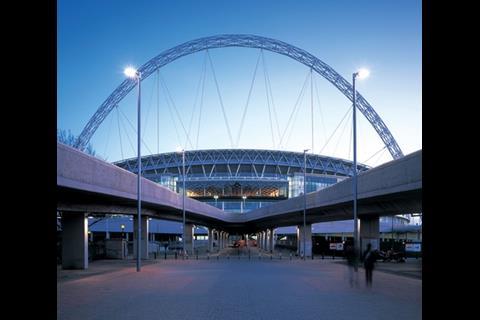
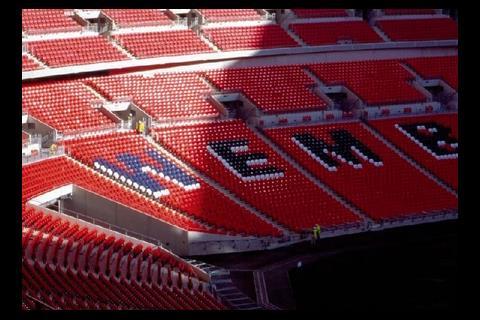
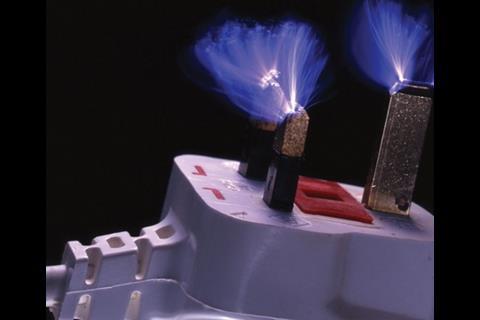


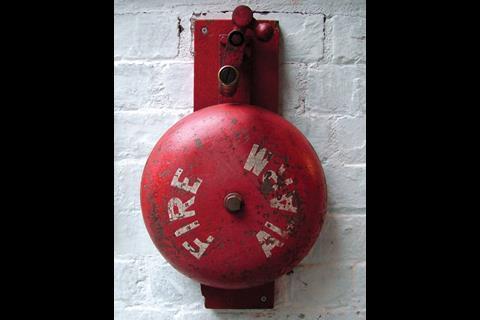
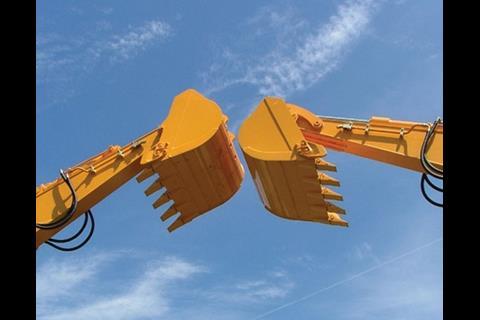
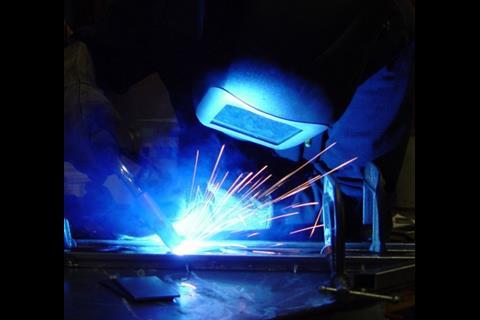






No comments yet